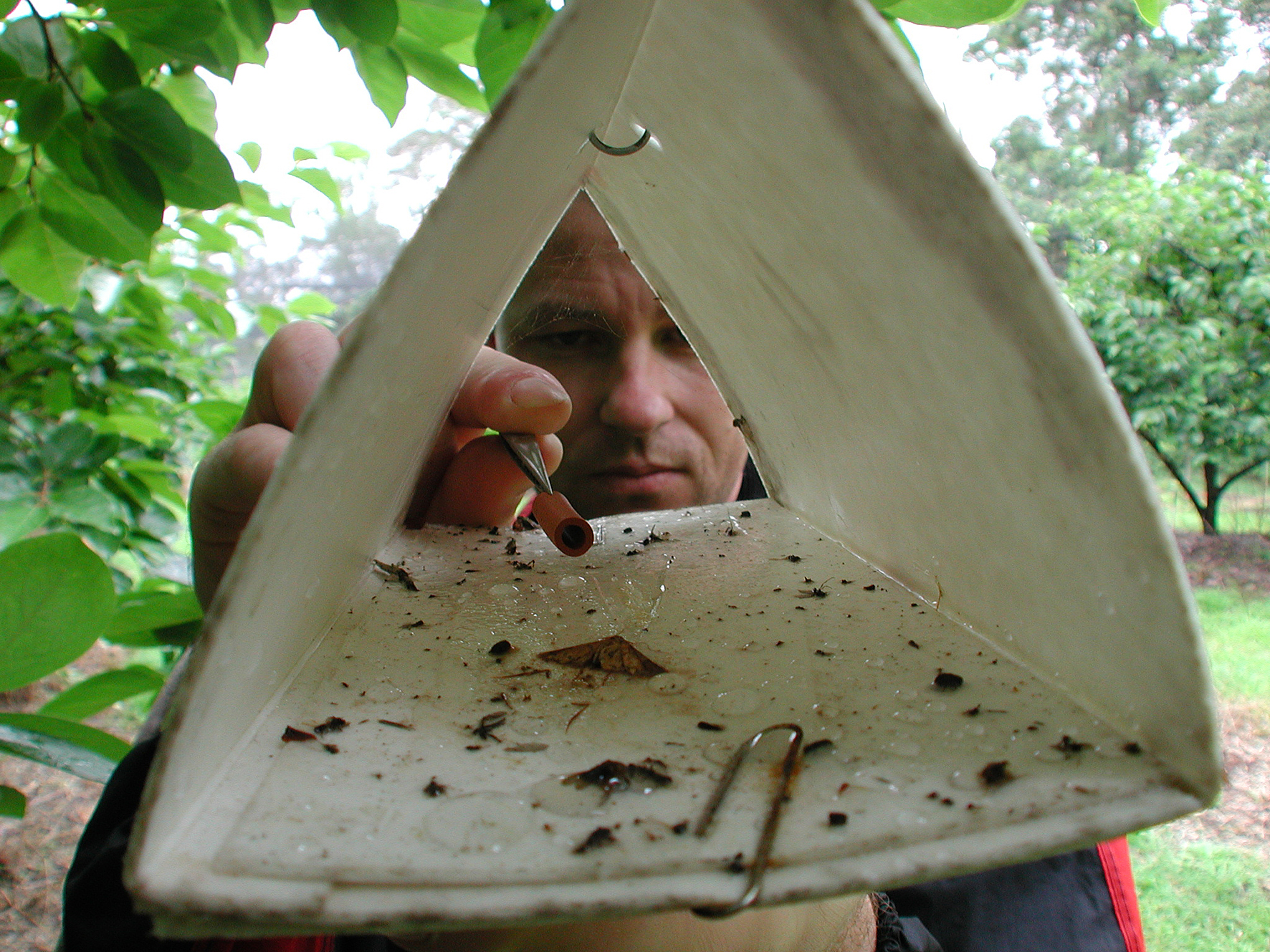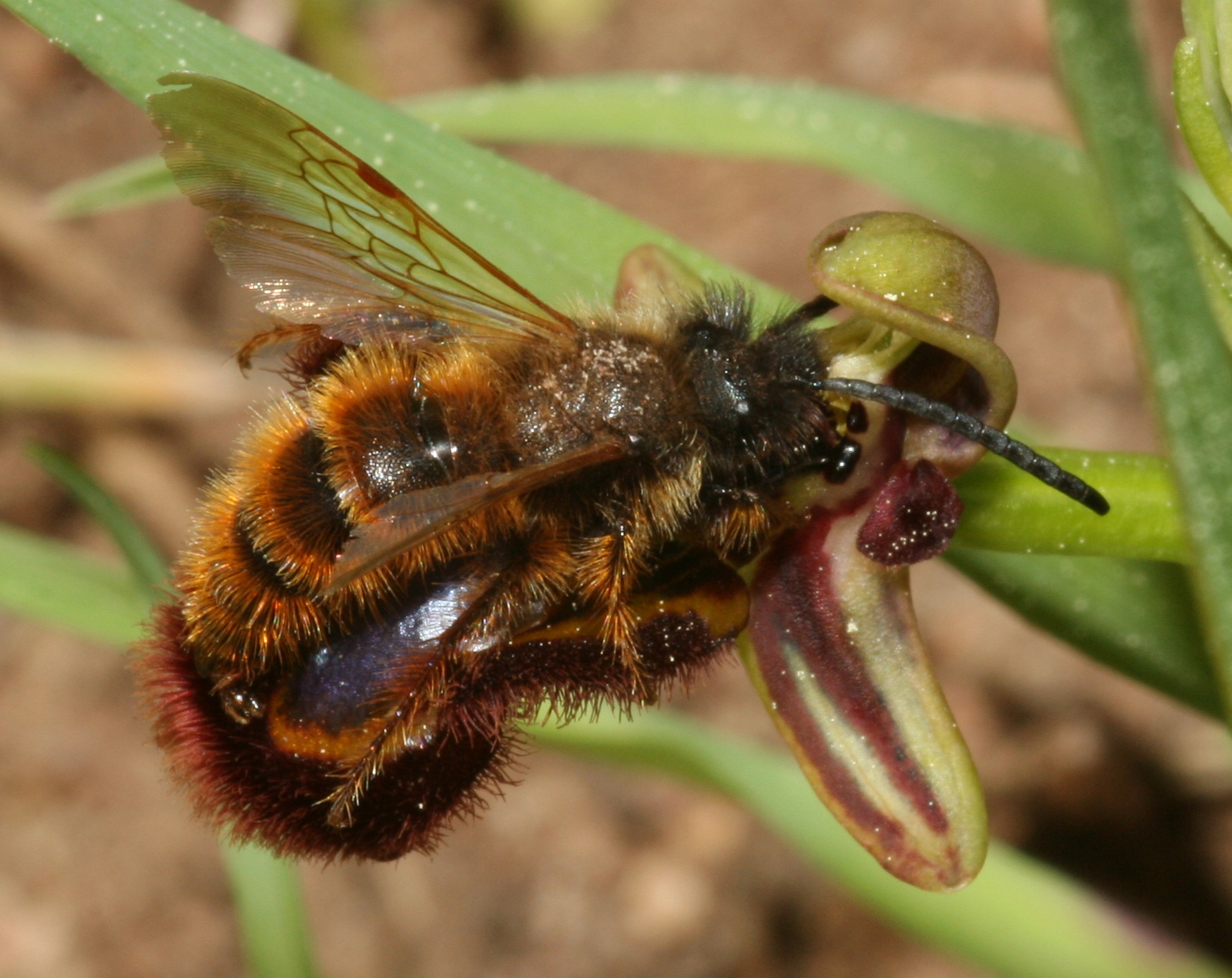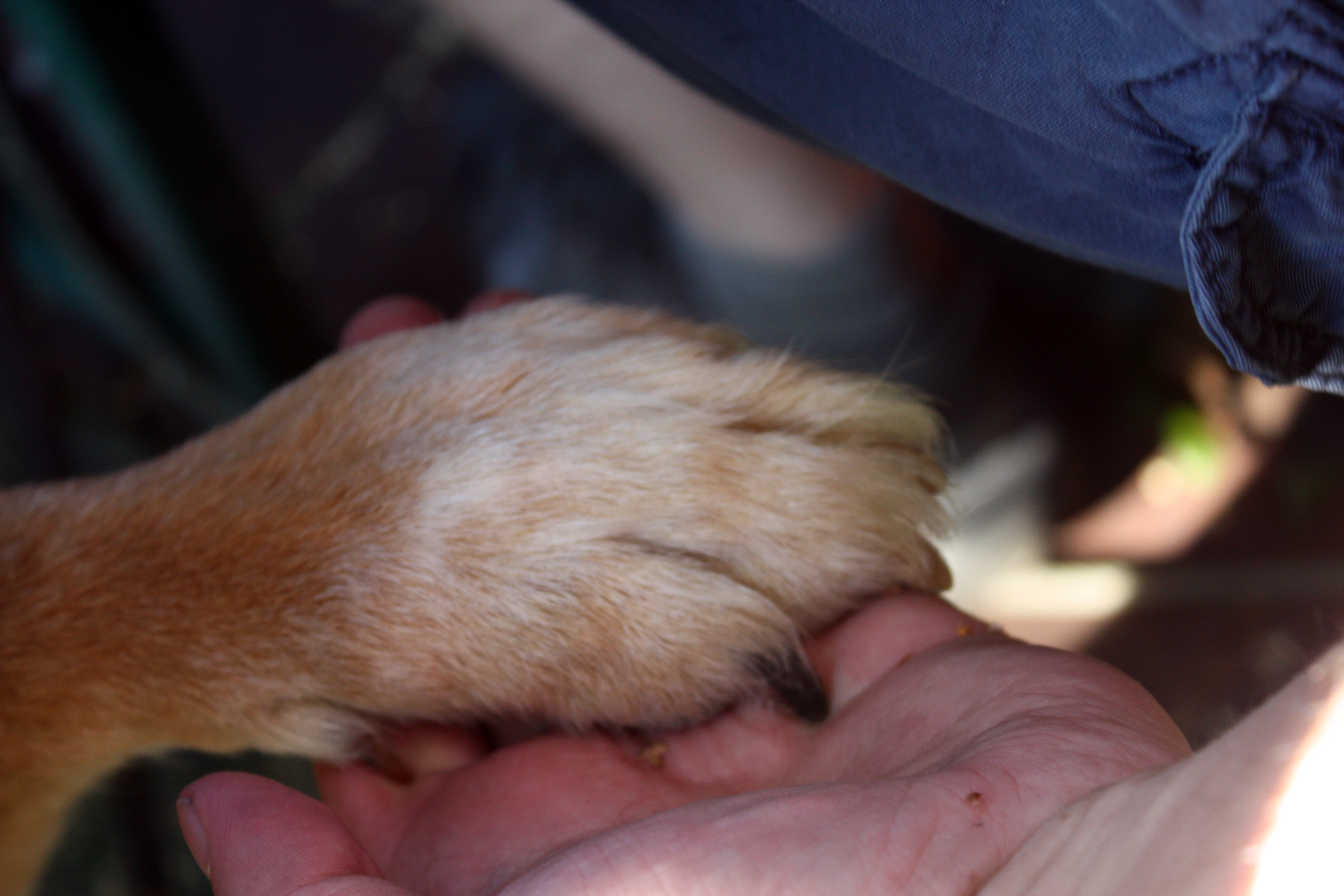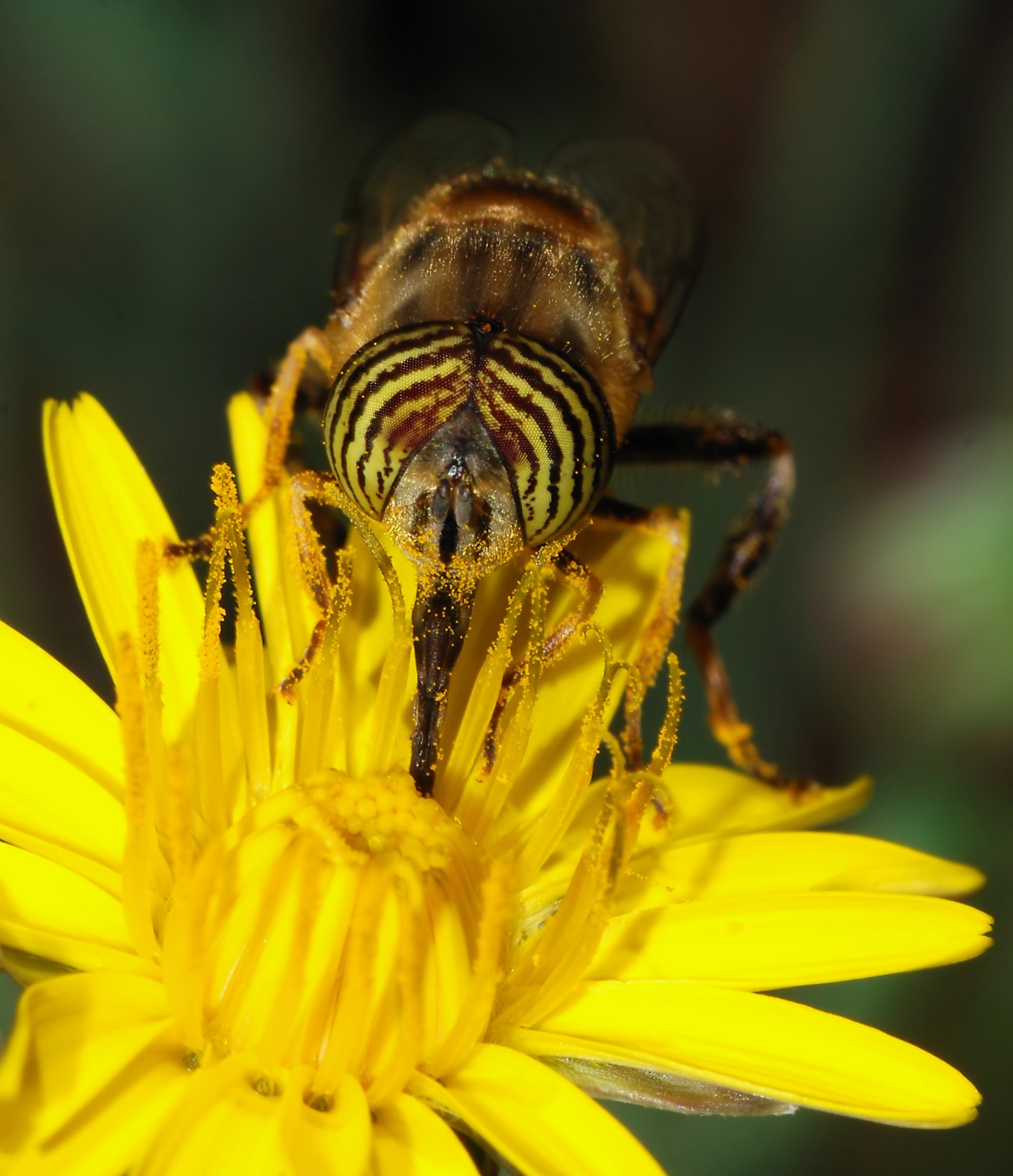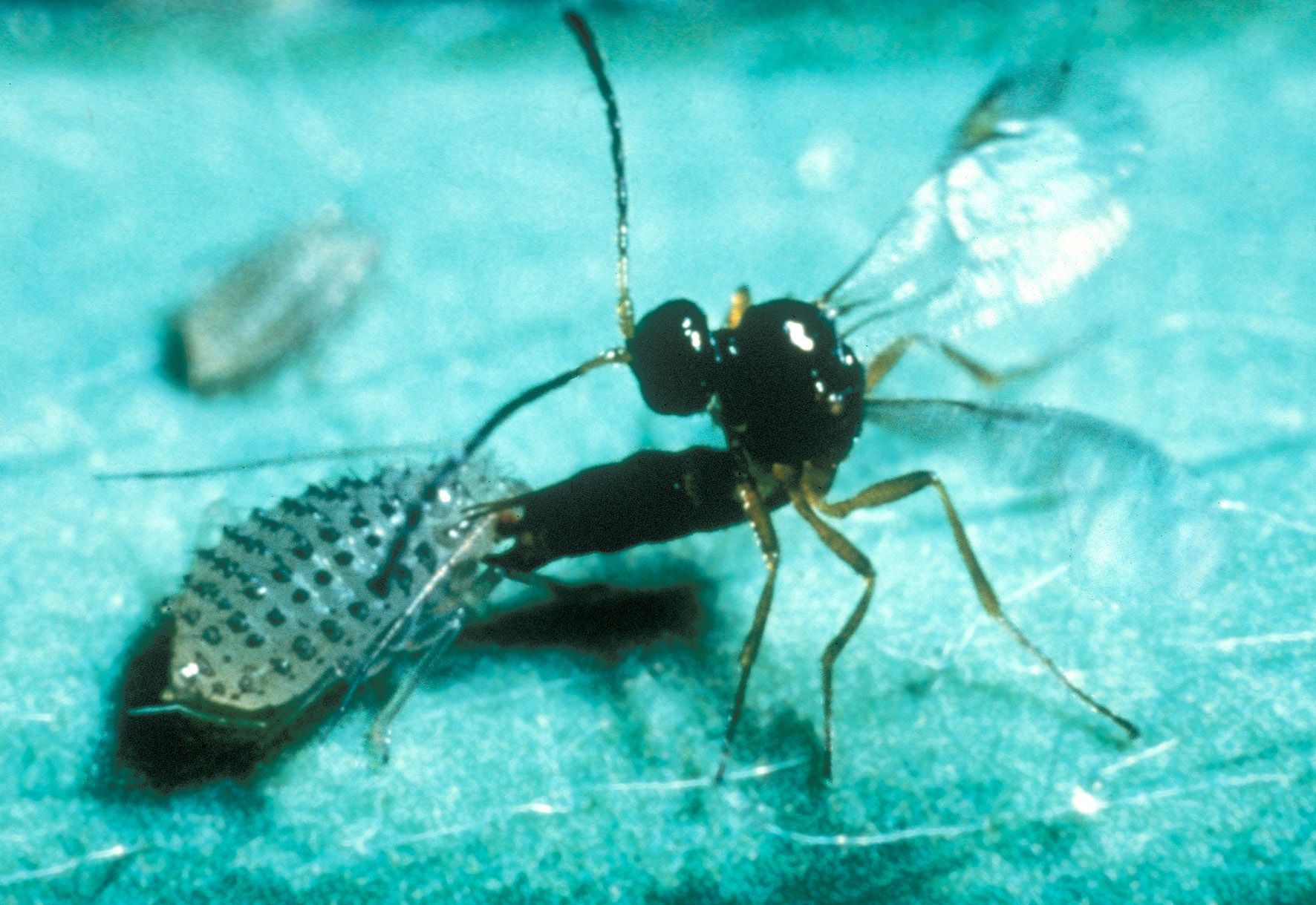|
Semiochemical
A semiochemical, from the Greek wiktionary:σημεῖον, σημεῖον (''semeion''), meaning "signal", is a chemical substance or mixture released by an organism that affects the behaviors of other individuals. Semiochemical communication can be divided into two broad classes: communication between individuals of the same species (intraspecific) or communication between different species (Interspecies communication, interspecific). It is usually used in the field of chemical ecology to encompass pheromones, allomones, kairomones, attractants and Animal repellent, repellents. Many insects, including Parasitoid#Parasitoidal insects, parasitic insects, use semiochemicals. Pheromones are intraspecific signals that aid in finding mates, food and habitat resources, warning of enemies, and avoiding competition. Interspecific signals known as allomones and kairomones have similar functions. In nature Pheromone A pheromone (from Greek ''phero'' "to bear" + ''hormone'' from Gree ... [...More Info...] [...Related Items...] OR: [Wikipedia] [Google] [Baidu] |
Chemical Communication In Insects
Chemical communication in insects is signalling theory, social signalling between insects of the same or different species, using chemicals. These chemicals may be volatile, to be detected at a distance by other insects' sense of smell, or non-volatile, to be detected on an Arthropod cuticle, insect's cuticle by other insects' sense of taste. Many of these chemicals are pheromones, acting like hormones outside the body. Among the many functions of chemical communication are attracting mates, aggregating conspecificity, conspecific individuals of both sexes, deterring other individuals from approaching, announcing a new food source, marking a trail, recognizing nest-mates, marking territory and triggering aggression. Chemical communication within a species can be usurped by other species in chemical mimicry. The mimic produces allomones or pheromones to influence the behaviour of another insect, the dupe, to the mimic's advantage. The process is important in ant mimicry where speci ... [...More Info...] [...Related Items...] OR: [Wikipedia] [Google] [Baidu] |
Allomone
An allomone (from Ancient Greek ' "other" and pheromone) is a type of semiochemical produced and released by an individual of one species that affects the behaviour of a member of another species to the benefit of the originator but not the receiver. Production of allomones is a common form of defense against predators, particularly by plant species against insect herbivores. In addition to defense, allomones are also used by organisms to obtain their prey or to hinder any surrounding competitors. Many insects have developed ways to defend against these plant defenses (in an evolutionary arms race). One method of adapting to allomones is to develop a positive reaction to them; the allomone then becomes a kairomone. Others alter the allomones to form pheromones or other hormones, and yet others adopt them into their own defensive strategies, for example by regurgitating them when attacked by an insectivorous insect. A third class of allelochemical (chemical used in interspe ... [...More Info...] [...Related Items...] OR: [Wikipedia] [Google] [Baidu] |
Bombykol
Bombykol is a pheromone released by the female silkworm moth to attract mates. It is also the sex pheromone in the wild silk moth ('' Bombyx mandarina''). Discovered by Adolf Butenandt in 1959, it was the first pheromone to be characterized chemically. Minute quantities of this pheromone can be used per acre of land to confuse male insects about the location of their female partners. It can thus serve as a lure in traps to remove insects effectively without spraying crops with large amounts of pesticides. Butenandt named the substance after the moth's Latin name ''Bombyx mori.'' ''In vivo'' it appears that bombykol is the natural ligand for a pheromone binding protein, BmorPBP, which escorts the pheromone to the pheromone receptor. Biosynthesis Bombykol is known to be derived from acetyl-CoA Acetyl-CoA (acetyl coenzyme A) is a molecule that participates in many biochemical reactions in protein, carbohydrate and lipid metabolism. Its main function is to deliver the acetyl ... [...More Info...] [...Related Items...] OR: [Wikipedia] [Google] [Baidu] |
Interspecies Communication
Interspecies communication is communication between different species of animals, plants, or microorganisms. Although researchers have explored the topic for many years, only recently has interspecies communication been recognized as an established field of inquiry. Mutualism Cooperative interspecies communication implies sharing and understanding information between two or more species that work towards the benefit of both species ( mutualism). Since the 1970s, primatologist Sue Savage-Rumbaugh has been working with primates at Georgia State University's Language Research Center (LRC), and more recently, the Iowa Primate Learning Sanctuary. In 1985, using lexigram symbols, a keyboard and monitor, and other computer technology, Savage-Rumbaugh began her groundbreaking work with Kanzi, a male bonobo (P. paniscus). Her research has made significant contributions to a growing body of work in sociobiology studying language learning in non-human primates and exploring the role of ... [...More Info...] [...Related Items...] OR: [Wikipedia] [Google] [Baidu] |
Pheromone
A pheromone () is a secreted or excreted chemical factor that triggers a social response in members of the same species. Pheromones are chemicals capable of acting like hormones outside the body of the secreting individual, to affect the behavior of the receiving individuals. There are ''alarm signal, alarm pheromones'', ''food trail pheromones'', ''sex pheromones'', and many others that affect behavior or physiology. Pheromones are used by many organisms, from basic unicellular prokaryotes to complex multicellular eukaryotes. Their use among insects has been particularly well documented. In addition, some vertebrates, plants and ciliates communicate by using pheromones. The ecological functions and evolution of pheromones are a major topic of research in the field of chemical ecology. Background The portmanteau word "pheromone" was coined by Peter Karlson and Martin Lüscher in 1959, based on the Greek language, Greek () and (). Pheromones are also sometimes classified as ec ... [...More Info...] [...Related Items...] OR: [Wikipedia] [Google] [Baidu] |
Kairomone
A kairomone is a semiochemical released by an organism that mediates interspecific interactions in a way that benefits a different species at the expense of the emitter. Derived from the Greek καιρός, meaning "''opportune moment""kairomone, n.". OED Online. September 2012. Oxford University Press. http://www.oed.com/view/Entry/241005?redirectedFrom=kairomone (accessed 3 October 2012).'', it serves as a form of "eavesdropping", enabling the receiver to gain an advantage, such as locating food or evading predators, even if it poses a risk to the emitter. Unlike allomones, which benefit the producer at the receiver's cost, or synomones, which are mutually beneficial, kairomones favor only the recipient. Primarily studied in entomology, kairomones can play key roles in predator-prey dynamics, mate attraction, and even applications in pest control. Predator detection and prey localization An example of this can be found in the Ponderosa Pine tree (''Pinus ponderosa''), which ... [...More Info...] [...Related Items...] OR: [Wikipedia] [Google] [Baidu] |
Attractant
An attractant is any chemical that attracts an organism, e.g. i) synthetic lures; ii) aggregation and sex pheromones (intraspecific interactions); and iii) synomone (interspecific interactions) Synomone An interspecific semiochemical that is beneficial to both interacting organisms, the emitter and receiver, e.g. floral synomone of certain '' Bulbophyllum'' species (Orchidaceae) attracts fruit fly males (Tephritidae: Diptera) as pollinator A pollinator is an animal that moves pollen from the male anther of a flower to the female carpel, stigma of a flower. This helps to bring about fertilization of the ovules in the flower by the male gametes from the pollen grains. Insects are ...s. In this true mutualistic inter-relationship, both organisms gain benefits in their respective sexual reproduction - i.e. orchid flowers are pollinated and the '' Dacini'' fruit fly males are rewarded with a sex pheromone precursor or booster; and the floral synomones, also act as rewards ... [...More Info...] [...Related Items...] OR: [Wikipedia] [Google] [Baidu] |
Trail Pheromone
Trail pheromones are semiochemicals secreted from the body of an individual to affect the behavior of another individual receiving it. Trail pheromones often serve as a multi purpose chemical secretion that leads members of its own species towards a food source, while representing a territorial mark in the form of an allomone to organisms outside of their species. Specifically, trail pheromones are often incorporated with secretions of more than one exocrine gland to produce a higher degree of specificity. Considered one of the primary chemical signaling methods in which many social insects depend on, trail pheromone deposition can be considered one of the main facets to explain the success of social insect communication today. Many species of ants, including those in the genus ''Crematogaster'' use trail pheromones. Background In 1962, Harvard professor Edward O. Wilson published one of the first concrete studies constructing the groundwork for the notion of trail pheromones. Cla ... [...More Info...] [...Related Items...] OR: [Wikipedia] [Google] [Baidu] |
Pollinator
A pollinator is an animal that moves pollen from the male anther of a flower to the female carpel, stigma of a flower. This helps to bring about fertilization of the ovules in the flower by the male gametes from the pollen grains. Insects are the major pollinators of most plants, and insect pollinators include all families of bees and most families of Aculeata, aculeate wasps; ants; many families of flies; many lepidopterans (both butterflies and moths); and many families of beetles. Vertebrates, mainly bats and birds, but also some non-bat mammals (monkeys, lemurs, Phalangeriformes, possums, rodents) and some lizards pollinate certain plants. Among the pollinating birds are hummingbirds, honeyeaters and sunbirds with long beaks; they pollinate a number of deep-throated flowers. Humans may also carry out artificial pollination. A pollinator is different from a pollenizer, a plant that is a source of pollen for the pollination process. Background Plants fall into pollination s ... [...More Info...] [...Related Items...] OR: [Wikipedia] [Google] [Baidu] |
Bolas Spider
A bolas spider is a member of the orb-weaver spider (family Araneidae) that, instead of spinning a typical Spider web, orb web, hunts by using one or more sticky "capture blobs" on the end of a Spider silk, silk line, known as a "bolas". By swinging the bolas at flying male moths or Psychodidae, moth flies nearby, the spider may snag its prey rather like a fisherman snagging a fish on a hook. Because of this, they are also called angling or fishing spiders (although the remotely related genus ''Dolomedes'' is also called a fishing spider). The prey is lured to the spider by the production of up to three sex pheromone-analogues. Bolas spiders have been treated as either the whole or part of either the tribe "Mastophoreae" or Mastophorini, the subfamily Mastophorinae, or the informal group mastophorines. Recent studies show that the genus ''Celaenia'', which does not use a bolas, belongs in the same taxonomic group. Description Bolas spiders are small nocturnal animals with conspi ... [...More Info...] [...Related Items...] OR: [Wikipedia] [Google] [Baidu] |
Orchid
Orchids are plants that belong to the family Orchidaceae (), a diverse and widespread group of flowering plants with blooms that are often colourful and fragrant. Orchids are cosmopolitan plants that are found in almost every habitat on Earth except glaciers. The world's richest diversity of orchid genera and species is in the tropics. Orchidaceae is one of the two largest families of flowering plants, the other being the Asteraceae. It contains about 28,000 currently accepted species in 702 genera. The Orchidaceae family encompasses about 6–11% of all species of seed plants. The largest genera are '' Bulbophyllum'' (2,000 species), '' Epidendrum'' (1,500 species), '' Dendrobium'' (1,400 species) and '' Pleurothallis'' (1,000 species). It also includes '' Vanilla'' (the genus of the vanilla plant), the type genus '' Orchis'', and many commonly cultivated plants such as '' Phalaenopsis'' and '' Cattleya''. Moreover, since the introduction of tropical species into cu ... [...More Info...] [...Related Items...] OR: [Wikipedia] [Google] [Baidu] |
Parasitoid
In evolutionary ecology, a parasitoid is an organism that lives in close association with its host (biology), host at the host's expense, eventually resulting in the death of the host. Parasitoidism is one of six major evolutionarily stable strategy, evolutionary strategies within parasitism, distinguished by the fatal prognosis for the host, which makes the strategy close to predation. Among parasitoids, strategies range from living inside the host (''endoparasitism''), allowing it to continue growing before emerging as an adult, to Paralysis, paralysing the host and living outside it (''ectoparasitism''). Hosts can include other parasitoids, resulting in hyperparasitism; in the case of oak galls, up to five levels of parasitism are possible. Some parasitoids Behavior-altering parasite, influence their host's behaviour in ways that favour the propagation of the parasitoid. Parasitoids are found in a variety of Taxon, taxa across the insect superorder Endopterygota, whose compl ... [...More Info...] [...Related Items...] OR: [Wikipedia] [Google] [Baidu] |
